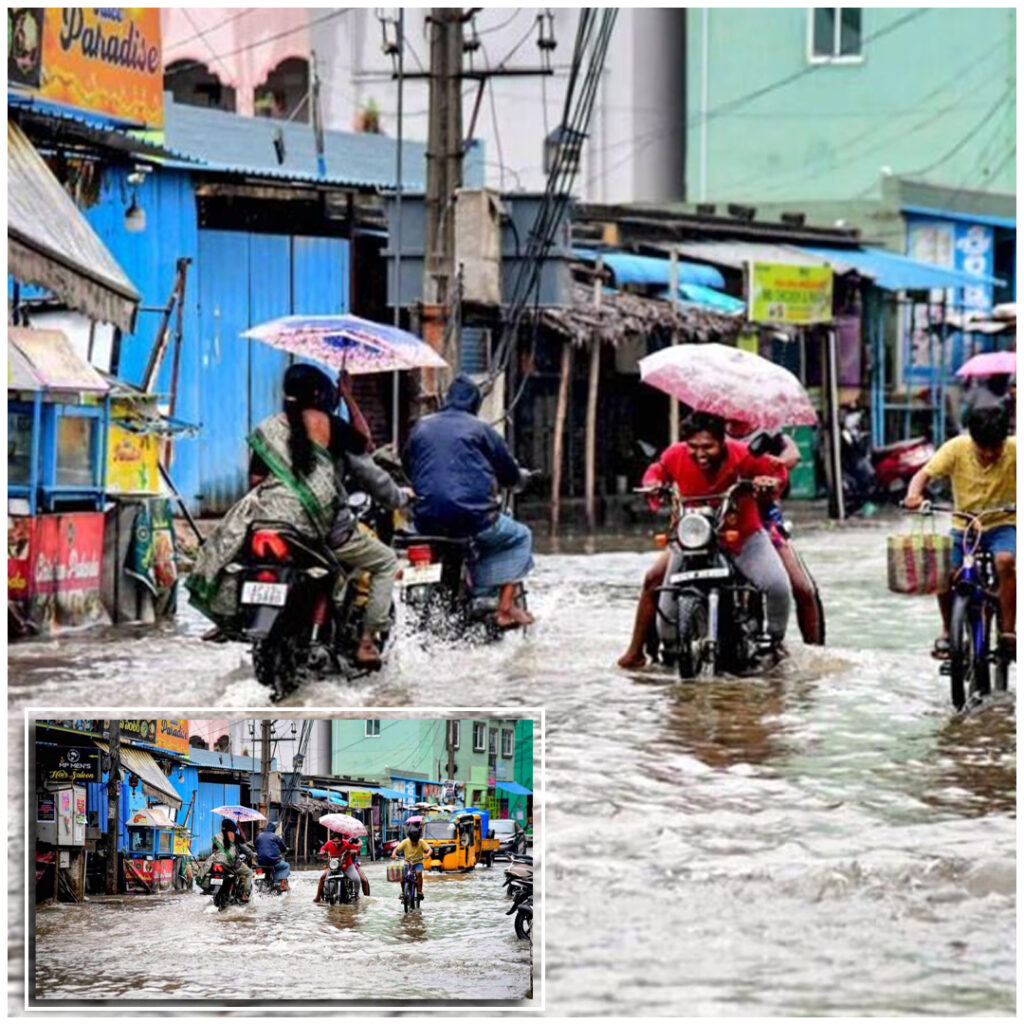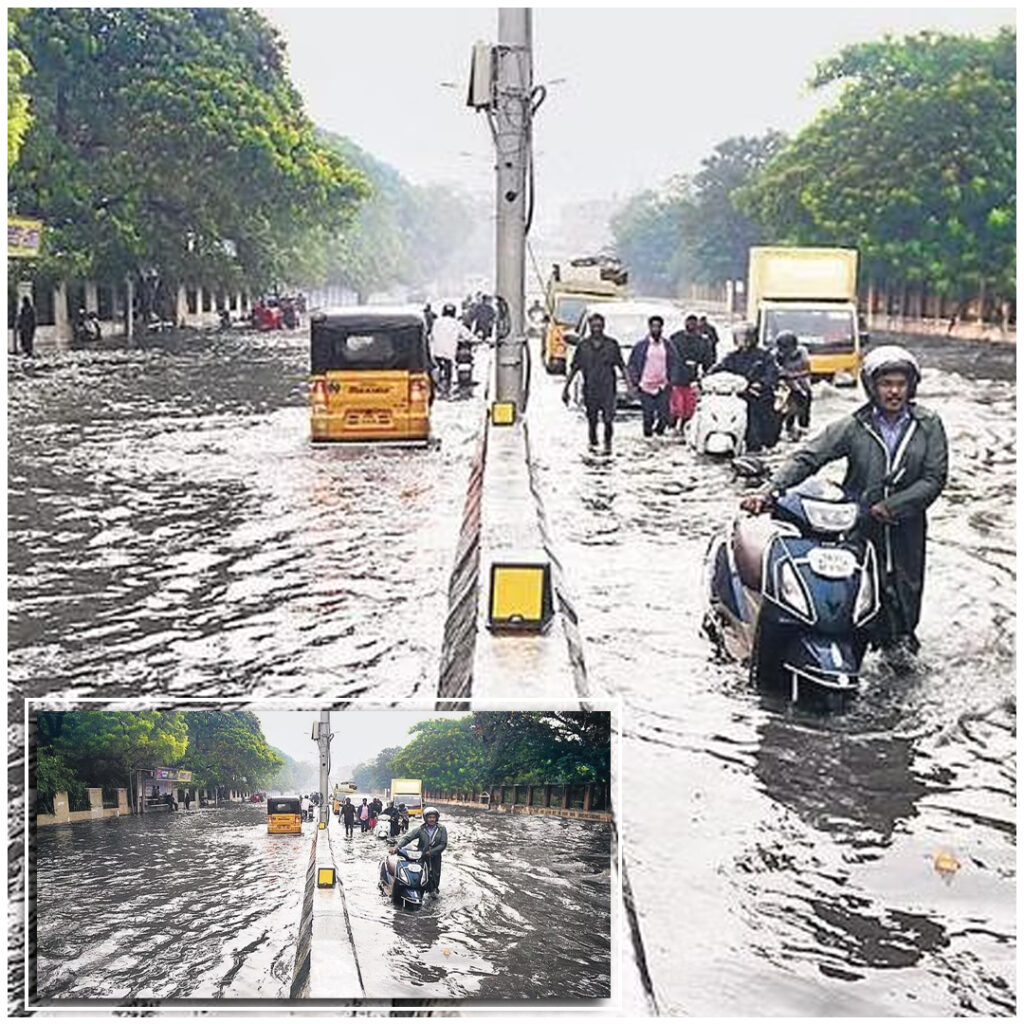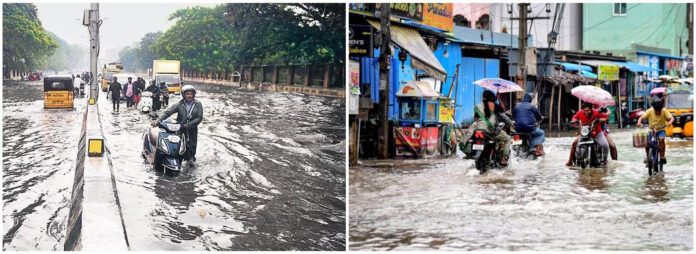As the coastal city of Chennai faced the wrath of Cyclone Michaung, residents grappled with severe waterlogging, gusty winds, and the tragic loss of five lives in various rain-related incidents. The storm, intensifying into a severe cyclonic storm according to the Indian Meteorological Department (IMD), disrupted normal life in Chennai and posed a significant challenge to emergency response teams.
Heavy Rainfall and Casualties:
Throughout Monday, Chennai experienced relentless heavy rainfall, leaving streets submerged and triggering incidents that resulted in the unfortunate loss of lives. The torrential downpour, coupled with gusty winds, created hazardous conditions, leading to accidents and incidents of drowning. The city’s infrastructure, already grappling with drainage issues, succumbed to the intensity of the rain, exacerbating the impact on residents.
Flight Disruptions:
Chennai’s airport, a crucial transportation hub, witnessed disruptions in flight operations as the runway succumbed to flooding. The adverse weather conditions forced the cancellation of several flights, while others were diverted to alternative airports. The aviation industry, already reeling from the challenges posed by the ongoing pandemic, faced additional setbacks due to Cyclone Michaung, highlighting the vulnerability of critical infrastructure during extreme weather events.

IMD’s Updates and Cyclone Michaung’s Trajectory:
The IMD played a pivotal role in keeping the public informed about the cyclone’s trajectory and intensity. According to the latest updates, Cyclone Michaung intensified into a severe cyclonic storm on Monday, posing a potential threat not only to Tamil Nadu but also to Andhra Pradesh. The forecast indicated that the cyclone was expected to make landfall along the south Andhra Pradesh coast on Tuesday morning, raising concerns about the potential impact on coastal communities.
Emergency Response and Evacuation Efforts:
In the face of the impending cyclone, emergency response teams were mobilized to mitigate the impact and provide assistance to affected residents. Evacuation efforts were initiated in low-lying and vulnerable areas to ensure the safety of those at risk. The coordination between local authorities, disaster management agencies, and the public played a crucial role in managing the crisis and minimizing further casualties.

Infrastructure Resilience and Lessons Learned:
The inundation of Chennai’s airport runway and the city’s struggle with waterlogging underscore the importance of enhancing infrastructure resilience to withstand extreme weather events. As climate change continues to influence the frequency and intensity of cyclones, it becomes imperative for urban planning and infrastructure development to prioritize climate resilience.
Conclusion:
As Cyclone Michaung continues its trajectory towards the south Andhra Pradesh coast, the people of Chennai remain vigilant, hoping for the storm to pass without further devastation. The events of Monday serve as a stark reminder of the vulnerability of coastal cities to the forces of nature and emphasize the need for proactive measures in disaster preparedness, response, and recovery. The resilience of communities and the ability to adapt to changing climate patterns will be key in navigating the challenges posed by cyclones and other extreme weather events in the future.






















